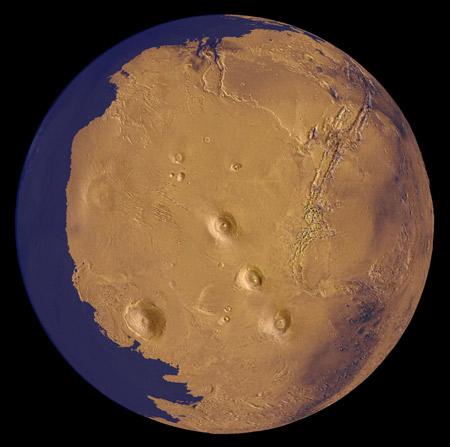By: Fraser Cain (Universe Today)
Planetary geologists have been puzzled by a strange paradox on Mars. Images of the planet show several shorelines where there much have once been ancient oceans on the Red Planet. But these shorelines vary in elevation by kilometres in some cases. How could the height of these shores change by such an amount?
Researchers think they have the answer: the planet tumbled in the past.
Just like the Earth, Mars is wider around its equator than it is from pole to pole. At some point, several billion years ago, when the planet still had an ocean, it experienced a redistribution in its mass. Perhaps this came from a series of volcanic eruptions, such as the ones that created the Tharsis Bulge and Olympus Mons. This additional mass caused the planet to rebalance its spin, shifting its pole 50 degrees away from its position.

Parts of the planet which were once at the poles were moved closer to the equator, and vice versa. This could explain the dramatically shifting sea levels. And then when the oceans disappeared, absorbed into the Martian interior, or blown away by the solar wind, the poles shifted again to their current position.
The research, carried out by scientists from UC Berkeley is published in the most current edition of the journal Nature.
No comments:
Post a Comment